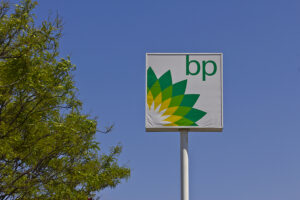bp’s 2024 Energy Outlook suggests significant increase in use of bioenergy

The scenarios consider carbon emissions from energy production and use, most non-energy related industrial processes, and natural gas flaring and methane emissions from the production, transportation and distribution of fossil fuels and the incomplete combustion of traditional bioenergy.
Current Trajectory is designed to capture the broad pathway along which the global energy system is currently travelling. It places weight on climate policies already in force and on global aims and pledges for future decarbonisation.
CO2 equivalent (CO2e) emissions in Current Trajectory peak in the mid-2020s and by 2050 are around 25% below 2022 levels.
Net Zero explores how different elements of the energy system might change to achieve a substantial reduction in carbon emissions. In that sense, Net Zero can be viewed as a ‘what if’ scenario: what elements of the energy system might change, and how, if the world collectively acts for CO2e emissions to fall by around 95% by 2050.
Net Zero assumes that there is a significant tightening in climate policies. It also embodies shifts in societal behaviour and preferences which further support gains in energy efficiency and the adoption of low carbon energy.
The carbon emissions remaining in Net Zero in 2050 could be eliminated by either additional changes to the energy system (including CCUS-enabled carbon dioxide removals (CDR) or by the deployment of natural climate solutions (NCS).
The use of modern bioenergy – modern solid biomass, biofuels and biomethane – increases significantly over the outlook, providing a source of low carbon energy to help decarbonise sectors and processes that are hard to electrify.
Modern bioenergy use increases by around two-thirds by 2050 in Current Trajectory and more than doubles in Net Zero to a little over 70 EJ by 2050. This expansion is achieved without any increase in land use, with most of the modern bioenergy sourced regionally from residues and wastes.
In Net Zero, the increase in the total use of bioenergy is partially offset by the declining role of traditional biomass, which is currently predominantly used for cooking and heating in Africa and some parts of Asia. The use of traditional biomass is almost eliminated by 2050 in Net Zero.
Less progress is made in reducing reliance on traditional biomass in Current Trajectory – total consumption falls by only around 5%, as the impact of rising populations offsets average per person use falling by around a quarter.
The largest source of growth of modern bioenergy is solid biomass (such as wood pellets, and forest and agricultural residues), which increases from a little over 25 EJ in 2022 to between 40 and 50 EJ by 2050 in the two scenarios, used mainly in the industrial and power sectors.
In industry, solid biomass is used as a low carbon alternative to coal and natural gas to fuel high-temperature heat processes, especially in cement and steel manufacturing. It is also used in a range of other industrial sectors where the source of the biomass is closely connected to the industrial process, such as in food or paper production.
In the power sector, biomass is used as an alternative to traditional forms of thermal power, especially coal and natural gas.
Within emerging economies, biomass is predominantly used in new biomass cogeneration plants that produce heat and power, and in co-firing plants together with coal.
The use of biomass in the power sector can be combined with CCS to provide a source of carbon dioxide removal (BECCS).
The use of BECCS is most pronounced in Net Zero, reaching around 1 GtCO2e in 2050, of which around 50% is deployed in the power sector.
Biomethane grows rapidly over the outlook, blended into the natural gas grid or fed into industrial sites as a direct substitute for natural gas.
By 2050 biomethane comprises around 3% of total gas volumes in Current Trajectory and around 15% in Net Zero, compared with less than 1% in 2022.
This growth is supported by increasing blending mandates, especially in Net Zero, where average blending rates are above 35% in many regions, including the US and EU.


























